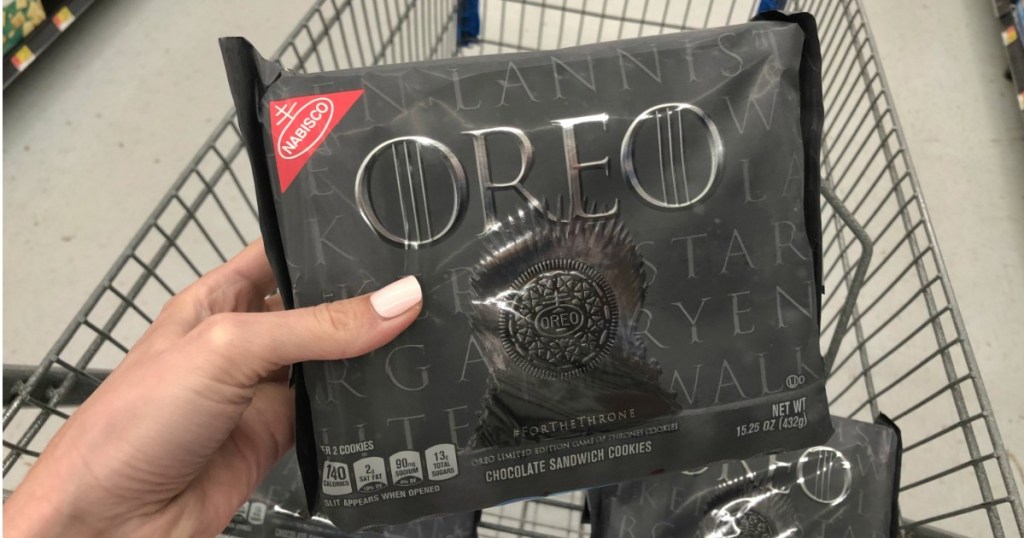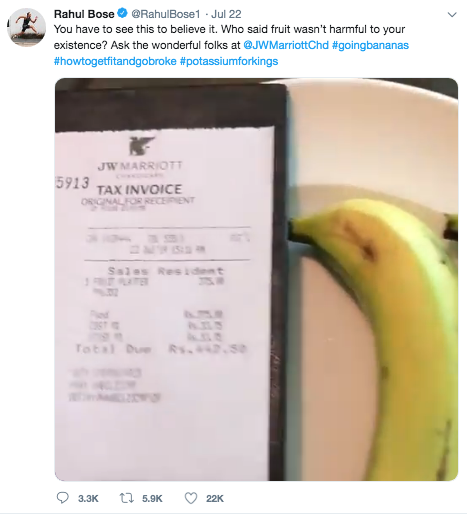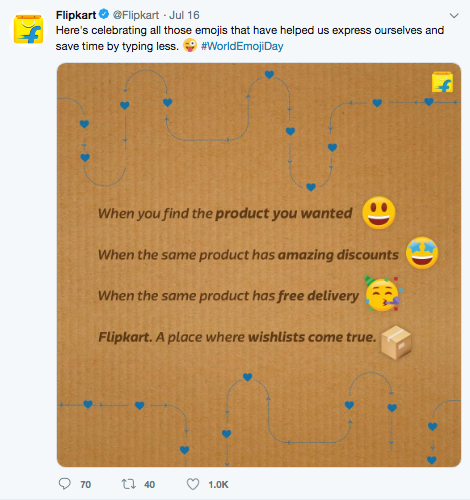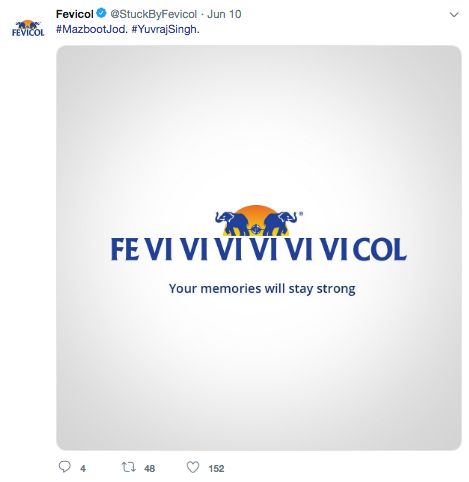7 Brilliant Examples of Moment Marketing
Amul has been doing it for years. Every time something catches the eye of people in India or the world, the company comes up with its “Utterly Butterly” ads that include brilliant puns that capture the imagination of the audience. These ads are displayed on hoardings, available in the print media, and are widely circulated on social media platforms.
This is what Moment Marketing is all about. It can be roughly defined as identifying key occasions in the wider public consciousness and using the same to deliver the right message to the right audience at the right time.
Social media has become one of the key enablers of this form of marketing because it allows brands to do some real-time, in-moment marketing. Sometimes, this doesn’t even cost a penny, but some quick-witted creatives and presence of mind.
The rise of moment marketing is seen as a refreshing change from other means of marketing on digital platforms and standardized campaigns. Because it takes into consideration the current events, topics that are closely watched by people and some key trends, it finds favour with an audience of potential customers.
In a nutshell, it is all about being a part of the noise, but at the same time, cutting through it and drawing attention to an element that resonates with what the brand represents.
For brands, moment marketing can be the ‘IT’ thing, because these campaigns help:
- Reach the target audience quickly
- Gain instant visibility
- Connect both online and offline audiences
- Pave the way for authentic audience interactions
- Align content to the context perfectly
- Provide brands of all sizes a level-playing field
- Delight the audience and make the brands memorable
- Win big with the simplest marketing tools and mechanisms
Here’s how some brands have impressed with their Moment Marketing game!
ixigo
Travel and hotel booking eCommerce website Ixigo rode on the waves of a recent incident, where an Indian family was caught stealing hotel accessories in Bali. Since the topic was something that resonated deeply with the niche they inhabited, the company came up with a brilliant viral video to tell a contrary tale that could help their audience become better travellers. Ixigo’s in-house team created an infomercial called Stuff You Can Take From Hotels, which was a hilarious take on the incident depicting Indian tourists’ behavior overseas.
The video not just made the audience relate to the content and the context, but also educated the masses, hitting two birds with one stone.
Zomato
On 22nd July, Actor Rahul Bose shared a video on Twitter to show how a luxury hotel in Chandigarh charged him Rs. 442.50 for two bananas. This led to some of the best moment marketing by brands, including food delivery brand Zomato.
The brand made the most of the opportunity and participated in the #RahulBoseMoment with a creative that said, “You could get a banana milkshake and banana split in less than the amount the 52-year old actor paid for his bananas”.
While this was taking a direct dig at the chain of luxury hotels, the brand also clearly showcased its value proposition of giving customers the convenience of ordering food at affordable prices.
Uber & Ola
Ridesharing app Uber India as a sign of supporting gay pride, incorporated the rainbow colors in its logo and the route map.
This was one of the times when almost all the popular brands showed their solidarity with the cause in some or the other way. Uber’s rival, OLA Cabs also went ahead and did something similar, by changing its ride icon by colouring it in rainbow hues.
Of course, there was an equal number of brands trying to ride the Pride Rainbow opportunistically. But when these ridesharing firms showed their support for LGBTQ rights it seemed natural and organic. An extension of their core function as solutions to make services accessible to a wide swathe of the population without any distinction or discrimination.

Flipkart
Emojis are pivotal to social media conversation and with July 17th being World Emoji Day, many leading brands jumped on to the Emoji bandwagon. This included eCommerce platform Flipkart, which used a creative to promote the day.
It didn’t just use random emojis to celebrate the day and gain instant visibility but tied it with some of its core product features and benefits. They connected with emojis that spoke of wish lists, a wide range of products, amazing discounts, and free delivery. With this focused approach, it turned the post into a memorable bit of Moment Marketing that drew the audience’s attention.
Fevicol
Indian adhesive brand Fevicol has been doing Moment Marketing since before the term existed. From taking a dig at the first-ever blackhole picture shared by Nasa to participating in the #10YearsChallenge, the brand has given us some of the most hilarious and creative campaigns ever.
It took the bat(on) again when Cricketer Yuvraj Singh announced his retirement. What we like about the brand’s take on the moment is that it keeps it simple, yet effective. It never fails to strike a balance between the brand’s core value and the trending topic. For instance, it stuck to its hashtag ‘MazbootJod’ for this campaign, just like its everyday campaigns. Their moment marketing campaigns stick on the memory!
Fastrack & Oreo
Titan’s Fasttrack took the fastest track to reach out to the fans of popular TV series Game of Thrones by launching merchandise during the show’s final season. The limited Game of Thrones Edition Merchandise was an apt example of how to strike the iron while it was still hot and a great example of how the moment can be mined not only in communications but also in the products themselves.
Also cashing in on the show’s immense popularity was Oreo, which used its product to reconstruct the opening sequence.
Both the brands show that the attraction of a trending topic or event can work wonders. They chose the timeliness, were prepared to embrace the moment and finally, they showed the ace up their sleeves and ultimately, won.

Paytm
Payment wallet firm PayTM showed the target audience that they can tailor their message perfectly in as few words as possible during Demonetization. Relying on the power of its slogan, it took advantage of the disruptive event to promote the minimization of cash transactions in the country. It was not a generic greeting or a casual campaign, but something that resonated well with the audience at that point of time. In the fewest words, the brand showed that it is there to make life easier for the people affected by the Government’s decision.

Tying the Loose Ends
Moment Marketing isn’t a kneejerk marketing reflex. It is now an accepted way to connect with the target audience by using contextual content. By definition opportunistic, the technique works best when the moment means something to the target audience of the brand, the campaign plays into the core ethos of the brand, and the communication is memorable.
Of course, the other part of that equation is that opportunistic campaigns are designed to be fleeting. So, the brands that choose the moment marketing mode will always have to keep their powder dry and their ears to the ground for the next opportunity to present itself. It’s a process of continuous communication.
Write to us on info@lokusdesign.com




